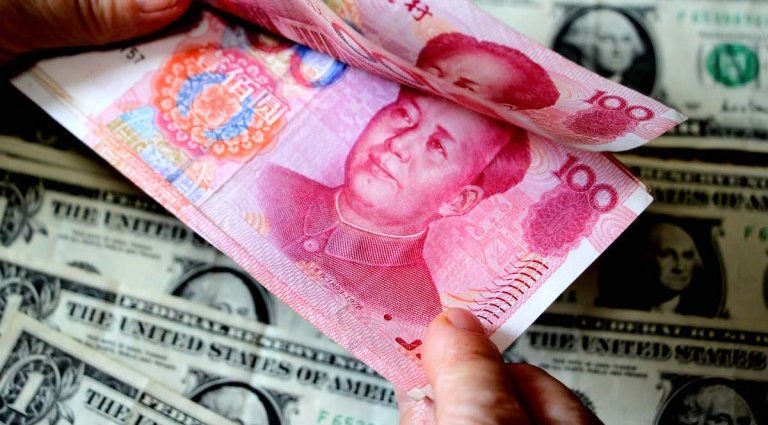
Is the dollar dying? In the wake of the Russia-Ukraine war and the massive growth in money supply and the US Federal Reserve’s assets in recent years, there has been a slew of stories and speeches extolling the virtue of de-dollarization.
The most recent came last week, when Brazilian President Luiz Inácio Lula da Silva called for the establishment of a BRICS (Brazil, Russia, India, China and South Africa) currency.
“Every night I ask myself why all countries have to base their trade on the dollar,” he said.
A few days earlier, Malaysian Prime Minister Anwar Ibrahim claimed there’s no reason for his country to continue depending on the dollar.
Also read: The emerging new world economy
And figures released April 3 showed that in February, China’s yuan surpassed the dollar as the most traded currency in Russia.
These events have added to a sense that the US dollar is in decline. With the rise of China and continued polarization of geopolitics, there’s a palpable sense that the yuan could pose a threat to the dollar’s dominance.
Countries previously beholden to the dollar could now strike out to trade in other currencies – for commercial reasons, or even political ones if they disagree with Washington.
China National Offshore Oil Corporation and France’s TotalEnergies conducted the first ever yuan-settled energy deal in March through the sale of 65,000 tons of Emirati liquified natural gas. Even Saudi Arabia has hinted over the past year that it might start settling oil trades in yuan rather than the dollar.
Yuan held back
But in truth, while there’s likely to be a continued rise in the use of the yuan for some trade and finance, internationalization of the yuan remains held back by capital controls, and lack of capital-account convertibility and financial-sector liberalization. There is, thus, still no real challenger to the dollar for the foreseeable future.
Some statistics can help provide context to this point. The yuan’s share of trade finance has more than doubled since Russia invaded Ukraine, according to the Financial Times. The currency’s share of trade financing on the SWIFT (Society for Worldwide Interbank Financial Telecommunication) banking system grew from under 2% in February 2022 to 4.5% in February 2023, a remarkable pace of growth.
But these gains map clearly on to the period that Russia itself has been cut off from SWIFT. With punishing Western sanctions in place, Moscow has turned to China for a much larger share of its imports. Thus, unable to finance in rubles, Russia has turned to the yuan.
Not only that, China’s share of global trade financing remains small, according to SWIFT. For context, the euro’s share is 6% and the US dollar’s share is more than 84%. Given that China is the world’s largest goods-trading nation, it’s remarkable that the yuan takes up such a small share of trade financing, indicative of the difficulties in internationalizing the currency and the continued status of the dollar as reserve currency.
Beyond the yuan, there are no other real challengers. The closest competitor would be the euro, but this is the currency of a disparate group of 20 states with varying fiscal policies, debt, and equity markets that suffered a significant sovereign debt crisis a little more than a decade ago. There’s little chance the euro will be seen as a viable alternative any time soon.
And if that’s true of the euro, imagine how much truer it would be of a BRICS currency – a fanciful idea that would attempt to unite widely divergent economies into a monetary union with little fiscal or political unity.
What of non-fiat alternatives? Crypto supporters will wax poetic about the benefits of cryptocurrencies like Bitcoin, and why they should be seen as better stores of value than the dollar. But Bitcoin, barely used as a medium of exchange, saw its value in dollar terms collapse by 75% from late 2021 to late 2022 before bouncing back in April 2023.
This hardy seems to be a widely traded, trusted, or valued currency that financiers, businesses, and governments would use in their transactions.
All of which is to say that the US dollar’s dominance is here to stay. For the dollar to be removed as reserve currency, a freely traded and convertible alternative, used widely and easily for trade, reserves and finance, would need to emerge. Eventually, that might be the yuan, but certainly not now.
The continued debasement of the dollar and growth in Chinese trade will likely lead to the dollar losing some of its luster. But the idea that the petrodollar is dead – given that major oil-producing states such as Saudi Arabia and the United Arab Emirates still peg their currencies to the dollar – is far-fetched.
Despite the grumbling, states are likely to be using the dollar as the global reserve currency for years to come.
This article was provided by Syndication Bureau, which holds copyright.

